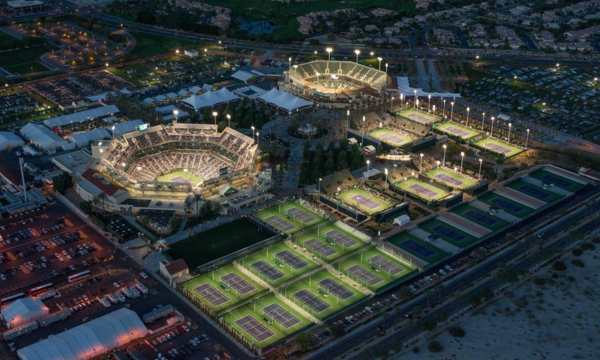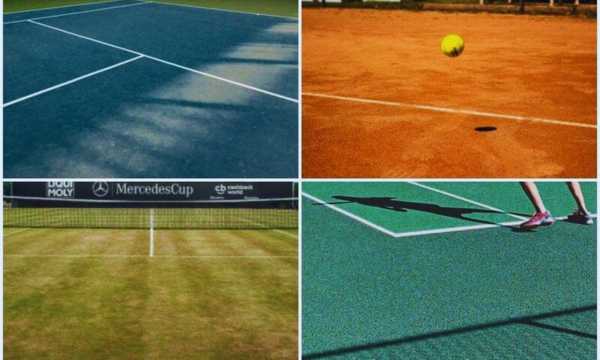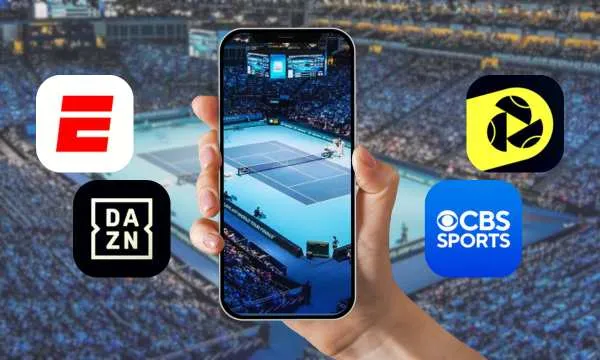US Open: Learn More About the Last Grand Slam of the Year
The US Open attracts millions of tennis fans annually as the grand event that closes the Grand Slam season.
Ad
This iconic tournament combines history, excitement, and prestige on the courts of Flushing Meadows.
The energy of New York transforms the US Open into a unique experience on the global tennis calendar.
Whether you are fascinated by the sport or just starting to appreciate tennis, discover why this tournament is a must-see for enthusiasts and professionals alike.
The Grand Finale of the US Open in the Slam Season
The US Open represents the thrilling conclusion of the Grand Slam season, bringing an atmosphere different from the other majors.
Held between August and September, the tournament arrives after months of intense international competitions. Players see the tournament as the last great opportunity of the year to win a prestigious world title.
The pressure on athletes is palpable, as many arrive physically worn out after a long season.
The heat of the late New York summer adds another challenge for the competitors. Those who reach the US Open need to balance physical recovery and mental preparation.
The unique energy of the American crowd transforms each match into a vibrant spectacle. Unlike the respectful silence of Wimbledon, this Grand Slam embraces the boisterous excitement of the fans. Spectators cheer impressive points and show enthusiastic support for their favorites.
Understanding the Rules and Formats of the Tournament
The tournament format follows the traditional Grand Slam structure with some particularities that make this event special.
The main draw includes 128 players in both men’s and women’s singles, competing in knockout matches. The seeds are formed considering the world rankings and recent results of the athletes.
A distinctive feature of the US Open is the tiebreak system in the final set. Unlike other Slams, this tournament has always used the traditional tiebreak in the last set. This rule avoids the famous “marathons” that can occur in other majors.
Men’s singles matches are played best of five sets, while women’s singles follow the best of three format.
The daily schedule starts in the morning and can extend into the early hours of the morning. The New York Grand Slam is known for matches that end in the early hours of the morning. Curiosities about the tournament rules:
- First Grand Slam to implement Hawk-Eye.
- Pioneer in offering equal prize money for men and women (since 1973).
- Uses the tiebreak system in all sets, including the deciding one.
- Introduced the 25-second shot clock between points to speed up matches.
The Iconic Courts of the Tournament
The US Open takes place at the USTA Billie Jean King National Tennis Center, an impressive complex with 22 courts.
The crown jewel is the Arthur Ashe Stadium, the largest tennis arena in the world. Inaugurated in 1997, this stadium holds an impressive 23,771 spectators and has had a retractable roof since 2016.
The second main court, the Louis Armstrong Stadium, was completely rebuilt in 2018. With a capacity of 14,000 people, it also features a retractable roof to ensure the continuity of matches regardless of the weather.
The Grandstand is the third most important arena, with a modern design and 8,125 seats. Known for its exceptional acoustics, this court amplifies the crowd’s energy.
Many memorable matches of the US Open have taken place in this more intimate and vibrant space.

US-Open-courts-(Source-Google)
The Unmistakable Magic of US Open Night Sessions
The New York sky illuminated by powerful spotlights creates a cinematic setting for the matches. devStarting at 7 p.m., these sessions turn the sport into a true entertainment show.
The nighttime atmosphere at the US Open is unparalleled, with celebrities present and cameras capturing memorable moments.
The crowd’s energy intensifies under the lights, creating an almost theatrical environment. Players often elevate their level during these games, inspired by the unique atmosphere.
Matches that extend into the early hours have become a hallmark of the tournament. Dedicated fans stay in the stands until the final hours, witnessing historic moments that frequently occur under these conditions.
Tickets for night sessions are among the most sought after in all professional sports. What makes night sessions so special:
- More dramatic and theatrical atmosphere.
- Cooler temperatures for the players.
- Frequent presence of celebrities and personalities.
- Prime-time television broadcasts for a global audience.
- Iconic moments that often define the tournament.
Meet the Kings and Queens of the US Open
The US Open has enshrined tennis legends throughout its centenary history. Jimmy Connors, Pete Sampras, and Roger Federer share the men’s record with five titles each.
Novak Djokovic has built significant history in the tournament with multiple wins and memorable finals. Rafael Nadal, despite being a clay-court specialist, has perfectly adapted his game to the fast courts of Flushing Meadows.
Among women, Chris Evert and Serena Williams lead with an impressive six individual titles.
Some athletes have shown a special affinity with the tournament’s atmosphere. The challenging environment of New York, with its noisy crowd and tense matches, tests the psychological limits of the competitors.
Winning this tournament requires emotional balance in addition to physical ability.
Unforgettable Matches that Marked the Tournament
The 2019 final between Rafael Nadal and Daniil Medvedev remains one of the greatest recent battles. The Spaniard needed almost five hours to overcome the Russian in an impressive comeback.
The 1991 semifinal between Jimmy Connors and Aaron Krickstein entered US Open folklore. Connors, at 39, showed supernatural determination to win in five sets on his birthday.
The enchanted crowd witnessed one of the greatest moments of the legendary American’s career.
In women’s tennis, the historic 2019 final between Serena Williams and Bianca Andreescu represented a generational clash.
The young Canadian maintained impressive composure against the American legend and the hostile crowd. This victory marked the arrival of a new generation at the top of world tennis. Unforgettable historic clashes:
- 2012 Final: Andy Murray wins his first Grand Slam.
- 2001 Final: Lleyton Hewitt’s surprise over Pete Sampras.
- 1984 Semifinal: The five-set clash between McEnroe and Connors.
- 1995 Final: Steffi Graf vs. Monica Seles in Seles’ emotional comeback.

Nadal-vs-Medvedev-in-2019-(Source-Google)
How the US Open Influences Rankings and the End of the Season
The 2000 points awarded to the champions can completely transform a player’s ranking. Many athletes schedule their entire season aiming to peak at this tournament.
The results obtained at the US Open often determine qualifications for the ATP Finals and WTA Finals. These year-end tournaments gather only the top eight players of the season.
A successful campaign in Flushing Meadows can guarantee this prestigious invitation.
For American players, performance in this Slam carries additional weight in terms of sponsorships and visibility. The media exposure during this event is unparalleled, with intense global coverage.
Athletes who stand out often secure lucrative contracts as a direct result.
The Historical Evolution of the Tournament
The US Open was born in 1881 as the U.S. National Championship, exclusive to men and held in Newport, Rhode Island, but in 1887 women began competing at a separate venue.
The tournament moved to the West Side Tennis Club in Forest Hills in 1915, and in 1968 women could compete at the same venue as men.
The Open era revolutionized the tournament in 1968 when professionals and amateurs could compete together for the first time.
The US Open moved to Flushing Meadows in 1978, inaugurating a new phase. This change transformed the event into a massive spectacle accessible to more spectators.
Technological innovations have always found space at the US Open. The tournament was a pioneer in implementing the Hawk-Eye system in 2006.
Television coverage expanded dramatically in recent decades, transforming the event into a global sports entertainment phenomenon.
Final Considerations
The unique combination of technical excellence, intense emotions, and the incomparable New York setting creates an unrivaled experience.
This Grand Slam closes the season of major tournaments with the characteristic energy of the city that never sleeps.
Constant evolution keeps the US Open relevant amid changes in the sport and fan expectations. Technological innovations, facility improvements, and format adaptations maintain growing interest in the event.
Whether in person at Flushing Meadows or watching the broadcasts, the magic of this Grand Slam continues to captivate generations.
The history of the US Open continues to be written every year, adding new unforgettable chapters to the rich tradition of tennis.
FAQ
When does the US Open take place?
What is the surface of the US Open courts?
Why is the US Open considered the noisiest Grand Slam?
How does the challenge system work during matches?
What are the greatest comebacks in recent US Open history?
 Tennis Courts: Understand the Advantage of Each Surface
Tennis Courts: Understand the Advantage of Each Surface
Believe it, tennis courts can completely transform your game! Keep reading! Ad Have you noticed how the same match can feel completely different depending on where […]
Keep reading Top Apps to Watch Tennis Live on Android and iPhone
Top Apps to Watch Tennis Live on Android and iPhone
Watching tennis live on a phone has never felt so smooth, and the last month brought meaningful upgrades that make it even better. Ad With refined […]
Keep reading Learn How to Improve Your Tennis Serves with These Tips!
Learn How to Improve Your Tennis Serves with These Tips!
A reliable tennis serve multiplies your options on every point. It sets the tone, opens angles, and keeps opponents guessing. Ad Today, modern insights go beyond […]
Keep reading